Jakob K. Der Neue Mensch
Set design, video work and artistic collaboration
with Mara Kanthak and performers Heike Bröckerhoff, Moritz Frischkorn, Jonas Woltemate
performed at Kampnagel, Hamburg, May 2017.
Read an extensive article on this piece in the Journal for Artistic Research.

“We have taken enough from history, now it is time to give it something in return!”
Jakob Klenke
"Any rule carries within it the eventual prospect of reduced liberty, but new rules can be surprisingly unruly, clearing away customs and habits that have stood in the way for ages”
Robin Evans
Jakob K. is a reconstruction project. It reconstructs a performance under the name of Der Neue Mensch, conceived in 1927 by gymnastics teacher and choreographer Jakob Klenke during his short activity at the Bauhaus in Dessau. Klenke’s movement practice has hitherto been underexposed in Bauhaus historiography. This partially stems from the fact that he has always found himself in the shadow of his friend and colleague Oskar Schlemmer, the master of the Bauhaus stage, but mainly from the fact that traces of his work are sparse and scattered.
Klenke’s conception of dance as an embodied practice, in which nothing other than the body itself could be the archive, lead to his aversion of photographic, drawn or indeed any form of documentation and means that we are dependent on a limited number of secondary sources and circumstantial evidence.
Three historical objects are reconstructed for the project: Klenke’s movement practice, its architectural framing and lastly Klenke the person. The project attempts to formulate strategies for the reconfiguration of the pieces of evidence available. This reconfiguration, a re-drawing of the base line for parallactic pieces of evidence, becomes the generative force of the reconstruction practice.

movement: scripted re-enactment
A re-performance of Klenke’s earlier piece from 1902 called Le Systemetook place in Hamburg in 2014. Le Systeme breaks down into 5 fragments of movement which are plotted onto a self-intersecting infinite loop – a figure Klenke was obsessed with throughout his life. How the mapping of these movement is structured, however, isn’t unequivocal. Towards the end of the piece, the re-performance disintegrates, escalating into a discussion about the very rules of the reconstruction. Negotiation replaces dance.
In the decade after the first world war, Klenke’s fascination with abstract geometrical rules as a generative force for the creation of dance movement lead to a close friendship (and eventually rivalry) with Oskar Schlemmer, who in 1926 invited him to the Bauhaus as a teacher of gymnastic and movement studies, of Bewegungslehre. With Schlemmer, he shared the conviction that proliferating mechanisation shouldn’t be considered a treat to a so-called human, but rather should be taken as a chance, as a potential liberation of the body from its constraining habits. Moving as instructed by the rules of the machine, the dancer can transcend his/her inherited perceptions.
»Do not complain about mechanisation, instead enjoy precision! Artist are willing to convert the drawbacks and perils of their mechanistic age into the silver lining of exact metaphysics.«
If Schlemmer’s choreographies however were notated in a linear fashion, a clear sequence of movements to be executed with clockwork precision by his dancers, Klenke in turn became more and more absorbed by the idea that, although the input, the basic movements of his pieces need not vary, they have the possibility to get endlessly reconfigured and reshuffled. The rules governing these reconfigurations seem to be, amongst others, his idee fixe of the infinite loop, the space in which the practice took place, but also and increasingly broader ecological entanglements like environmental influences.
Recent field work in Walter Gropius’ Prellerhaus at the Bauhaus in Dessau, in which Klenke lived and worked in a 20 square meter room, started with a site-specific re-performance of the previously reconstructed movements from le Systeme. These are later digitized, in order to achieve maximum reconfigurability. One important factor within this adaptable reconfiguration seemed to be the pattern of shadows cast by Gropius’ delicate steel frame windows – Klenke, according to one of his students, used to describe how he enjoyed the superimposition of these shadows’ reliability, tirelessly performing their notational duty, and the human movement, slowly mutating as repetition and exhaustion take their toll.
Klenke devised increasingly complex systems for how to reconfigure and recombine the movements – until these movements, so he realised, eventual became impracticable. The performance of Klenke’s avatar, endlessly virtuosic in our digitally reconstruction, verges on the anatomically impossible, a self-penetrating human Klein bottle. This begs the question if Der Neue Mensch was in fact ever performed, by Klenke (who was 53 at the time) or by anyone at all; or if it had become a thought experiment, a theoretical project of which our re-performance is in fact the actual first performance.





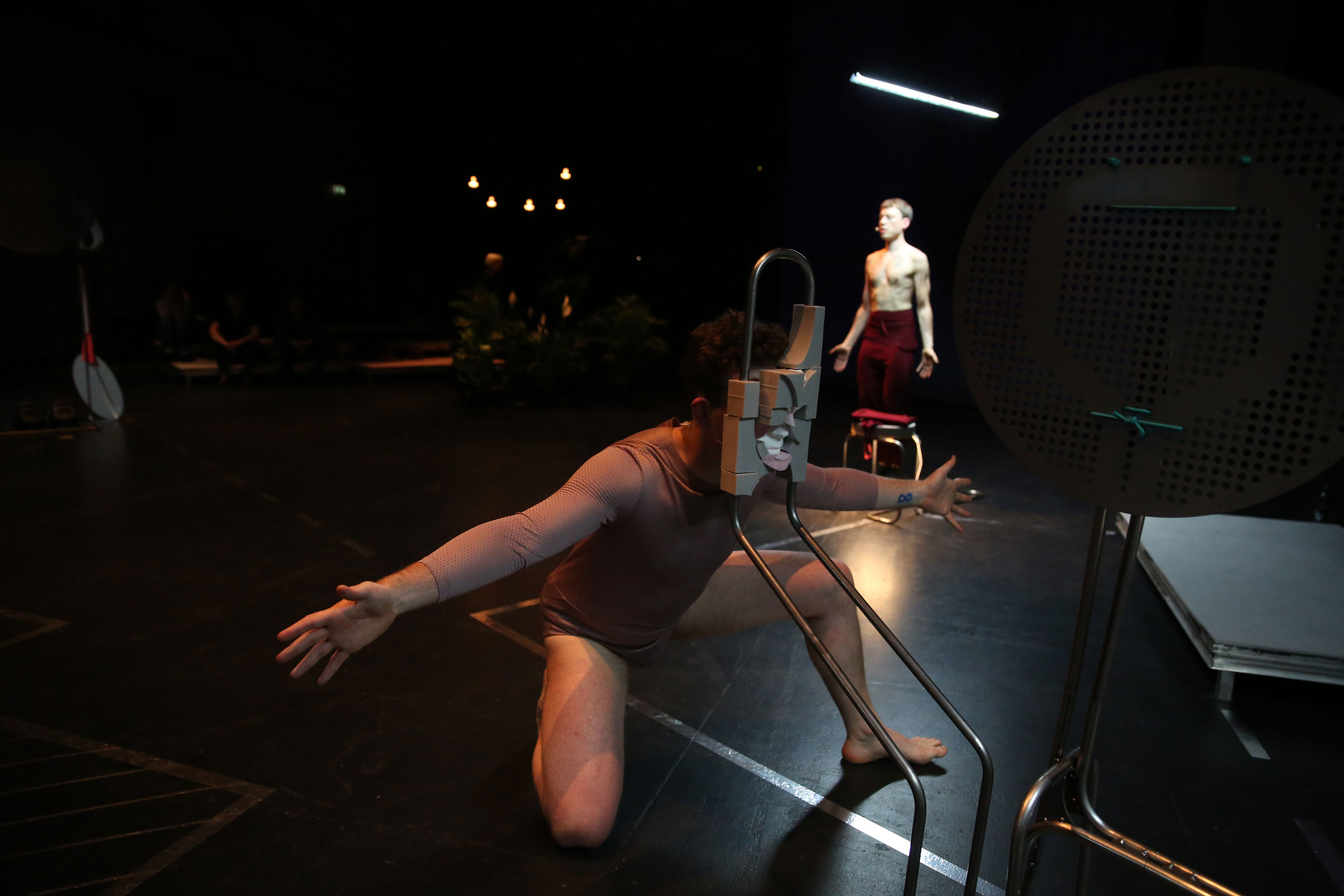






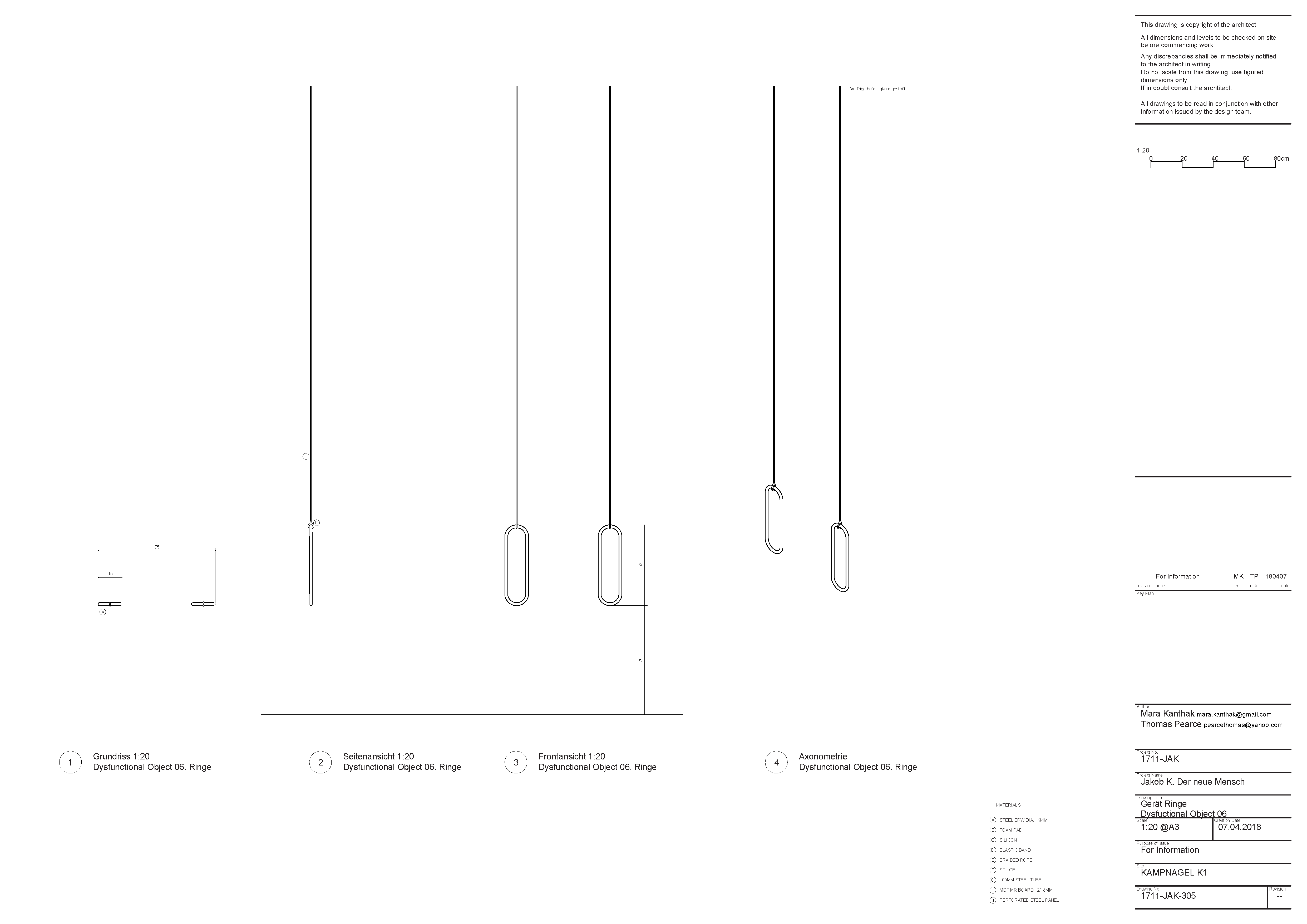

space: blind forensics
The above-mentioned field work in Dessau was also an opportunity to capture, with submillimetre forensic precision, the space and building in and for which Der Neue Mensch was conceived. The captured laser scans however, share a sense of partial blindness with the non-oriented photographs in photogrammetry – even if, unlike photogrammetry, directly capturing three-dimensional data. Like those photos, they are still relationally blind – that is to say, although they know where precisely everything is in relationship to themselves, they do not know their relationship to other scans.
Before being registered to each other using common points as hinges, these scans are solipsistic and unhinged: they produce simultaneous, alternative and overlapping arrangements of identical architectural elements. The stage set, on which the piece will be performed this May in Hamburg, offers a playing field of spatial negotiation and alternative configurations in which each element appears in multiple orientations, materials and states of completion. Situated between exhibition, stage set and gymnastics studio, it is to become a forum for the discussion and testing of reconstruction strategies – for the very negotiation of evidence in which the previous re-construction of Le Systeme escalated.

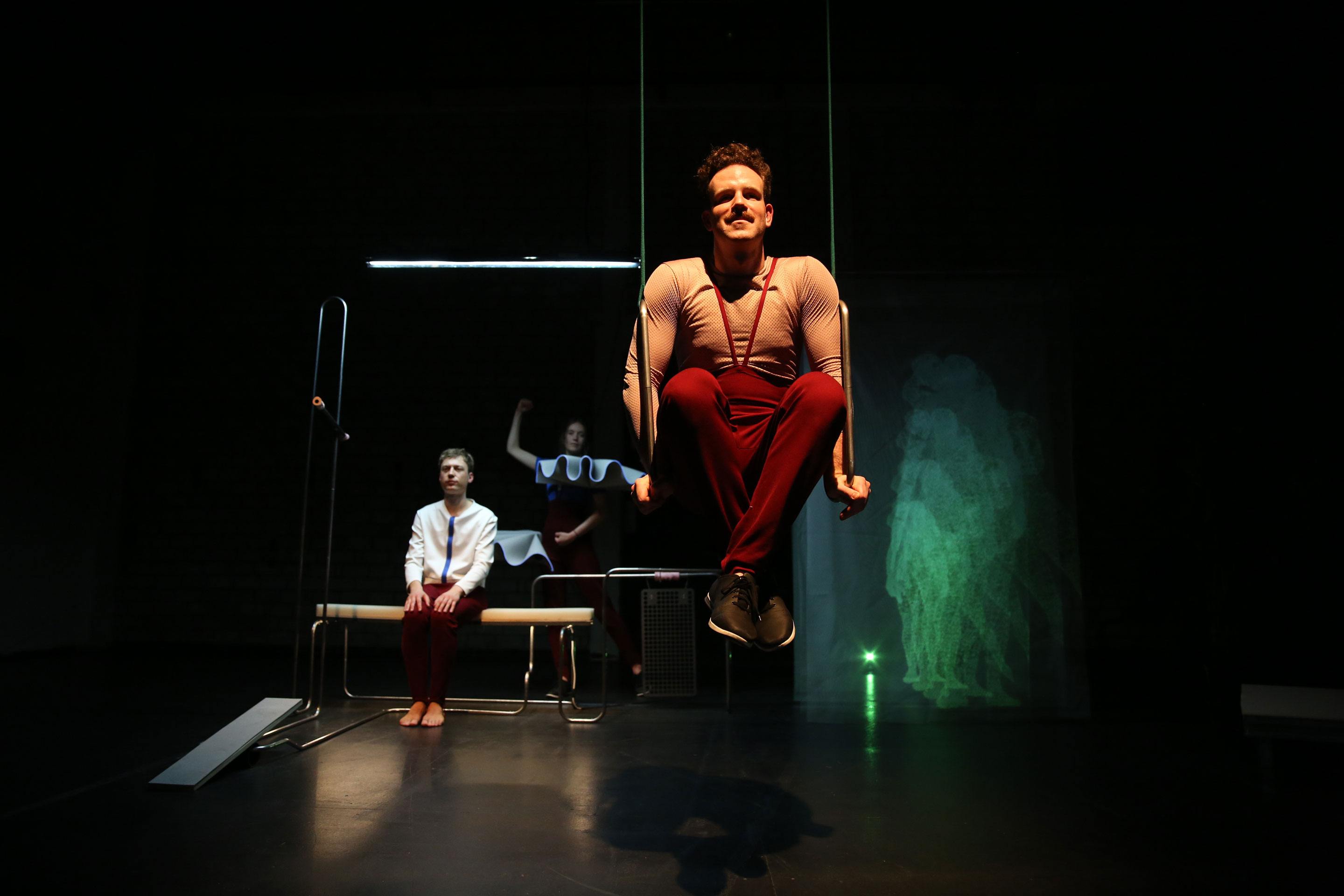

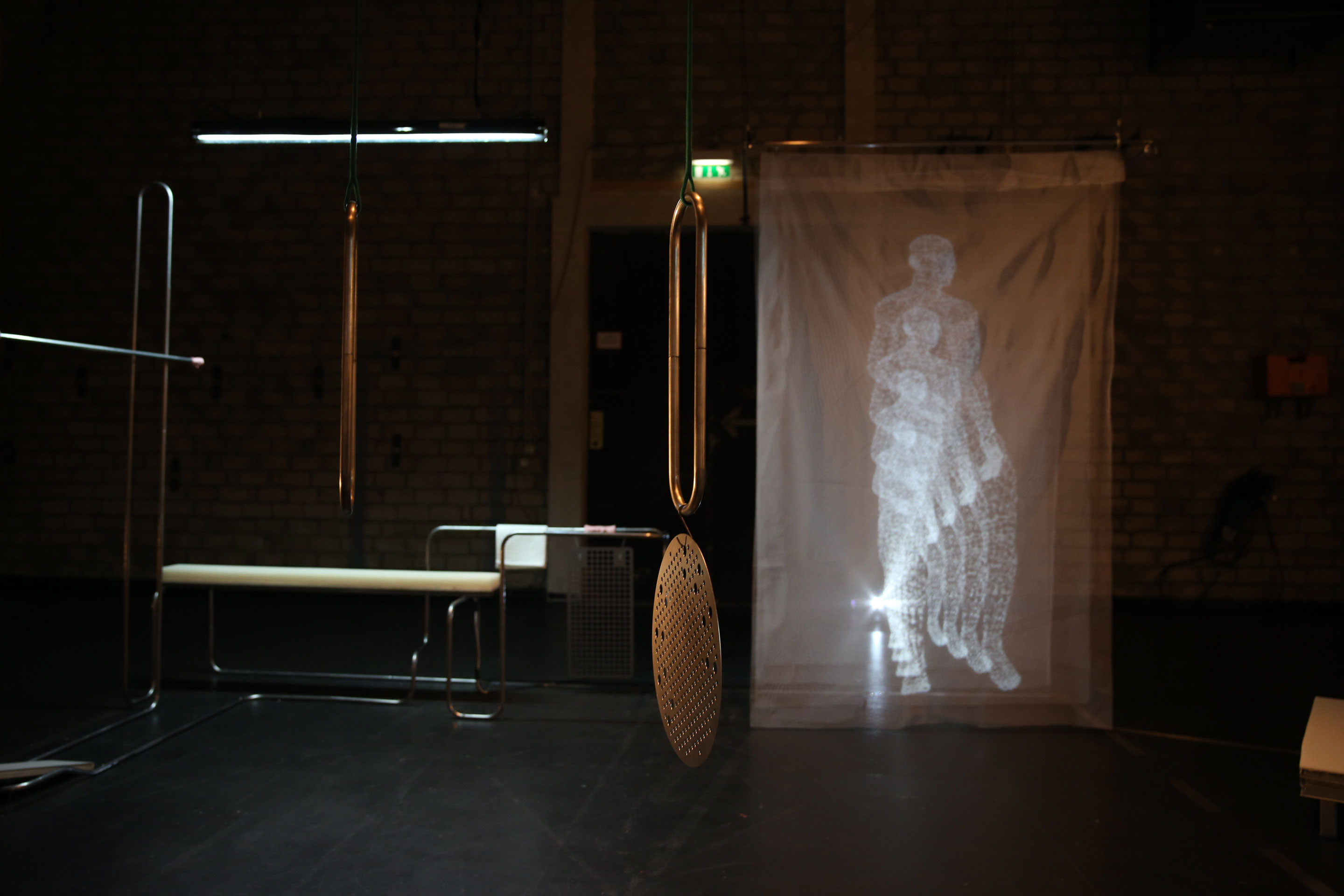

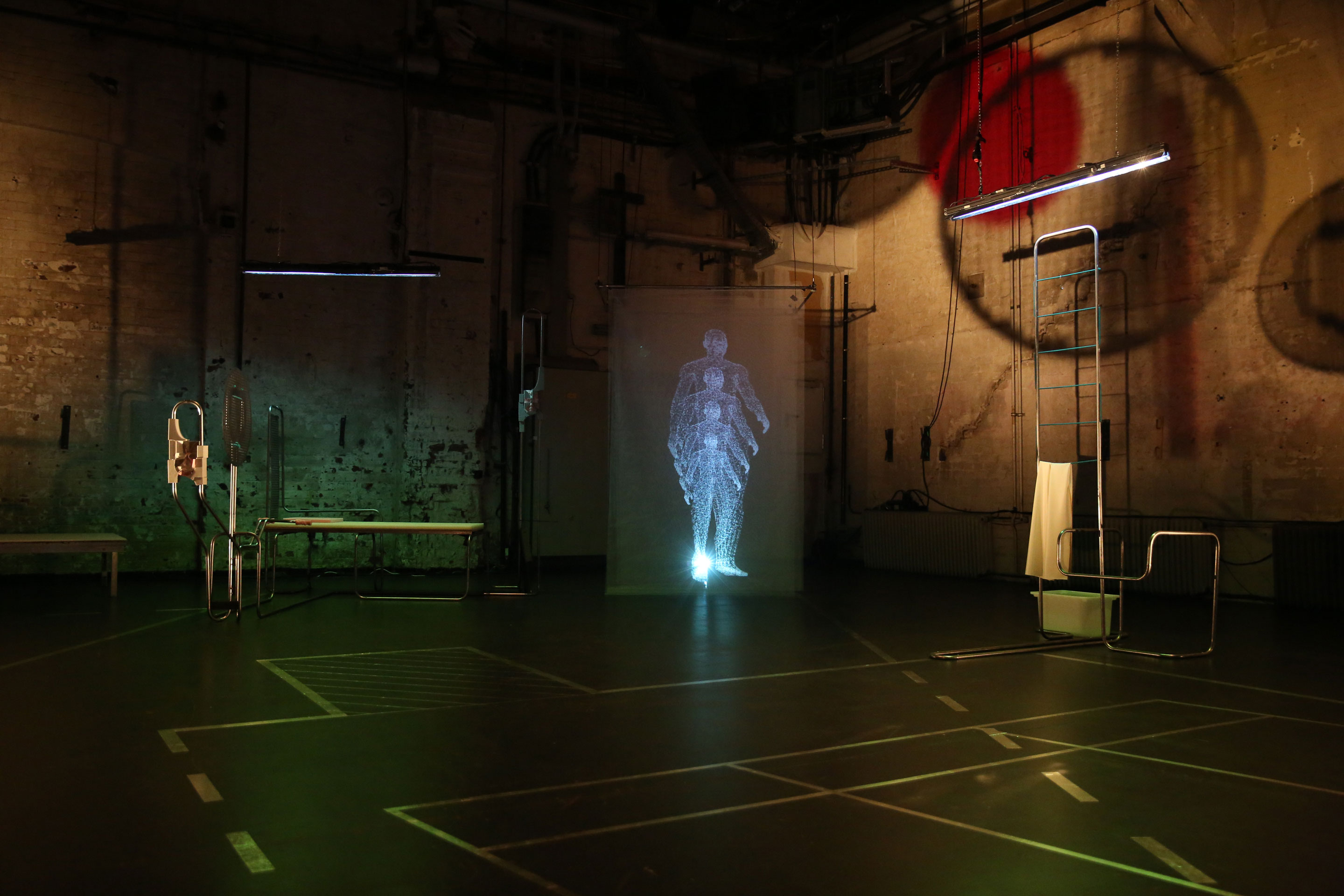


identity
With every layer of reconstruction, and reconstruction of reconstruction, the fact that Jakob Klenke never historically existed seems to become of less interest. Like the Shinto shrines which have been ritually reconstructed every twenty years for countless centuries, the practice of reconstruction becomes more pertinent than the question of an alleged origin or original.
Klenke is everyone who contributes to his re-invention and re-enactment. His or her identity is the fleeting sum of inputs. Hence Jakob’s resurrection is composed of photogrammetric data of the three performers’ features. Yet, as always, the rules of this composition – whether Jakob is a weighted average, a fluctuating interpolation, an overlay or a fractured hybrid – remains subject to negotiation. A negotiation in which and of which, the performance is made.

Photography by Anja Beutler